Abstract
A lattice random-walk model is used to simulate diffusion in a porous polymer. This model may be useful for the practical design of drug-release systems. Both interacting and noninteracting particles (random walkers) were allowed to diffuse through a pore with a single exit hole. It was found that the specific interactions among the diffusing particles have little influence on the overall release rate. Diffusion through more complicated structures was investigated by simulating the diffusion of particles through two pores connected by a constricted channel whose length and width were varied. The overall rate of release was found to be proportional to the width of the constricted channel. When the length of the channel was greater than or equal to the length of the pore, the rate of release was also inversely proportional to the channel length. From a practical standpoint, release rates can be decreased (and times for release increased) by one or two orders of magnitude by decreasing the width and expanding the length of the interconnecting channels in the polymer matrix.
Full text
PDF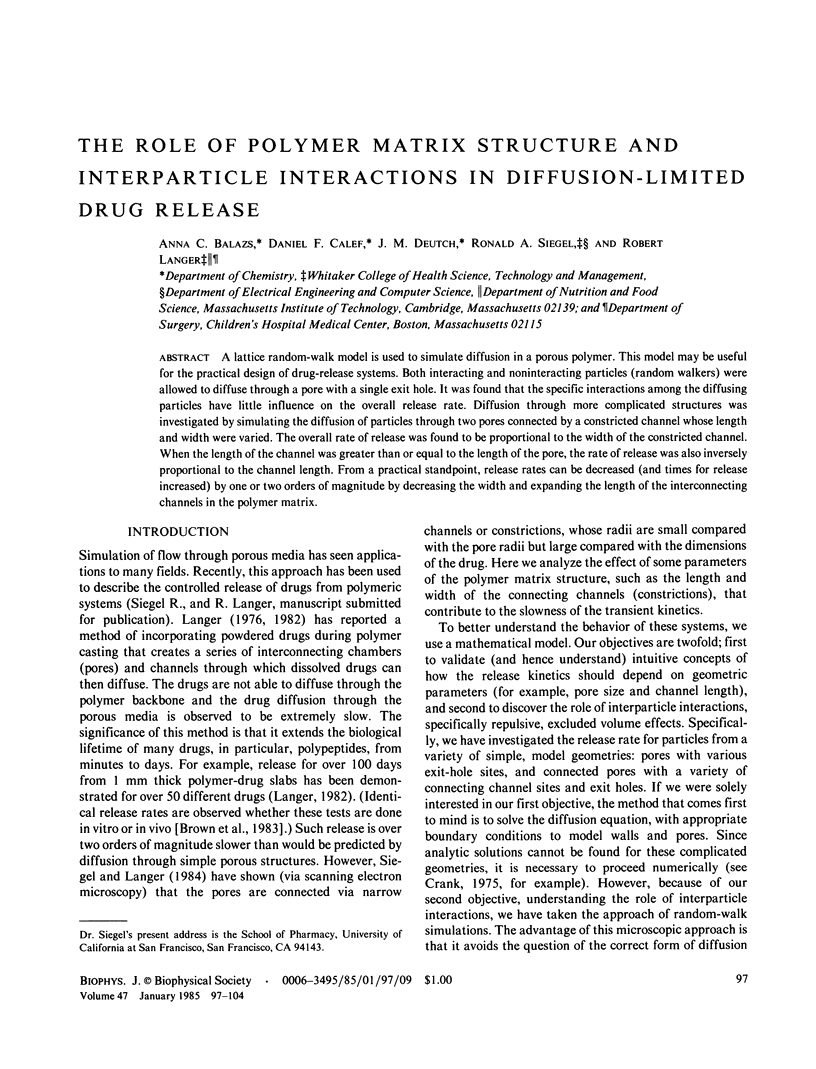
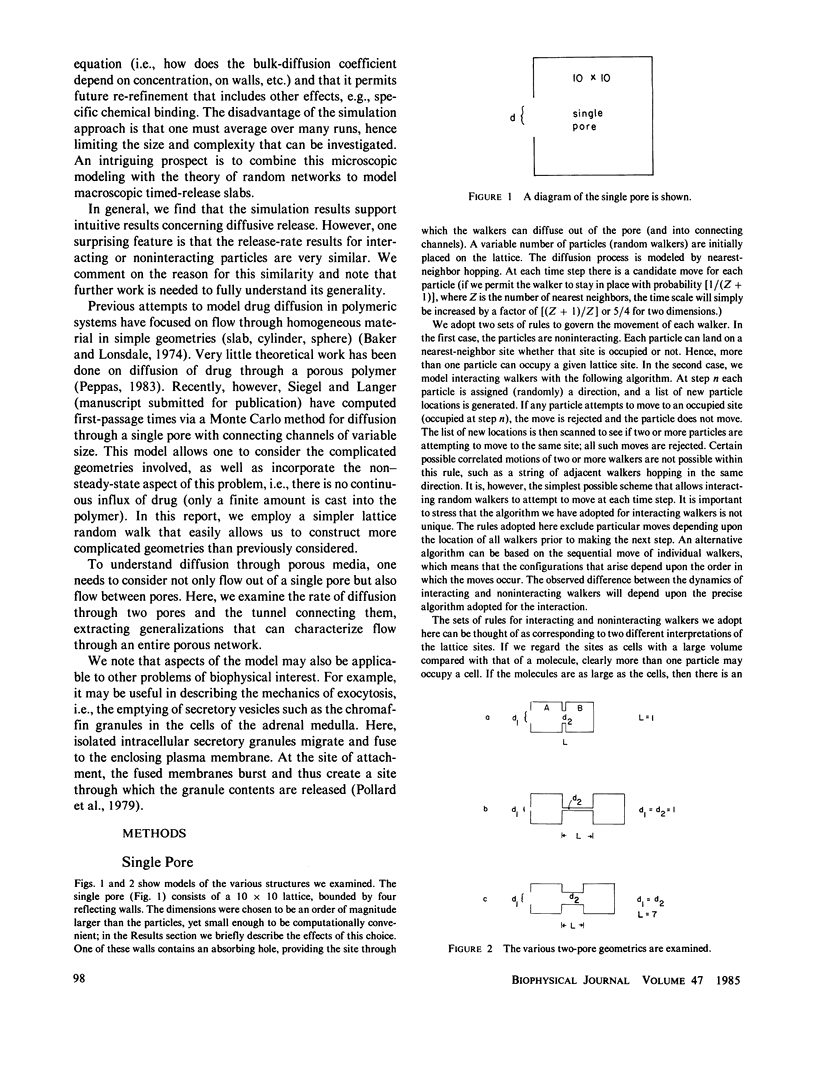
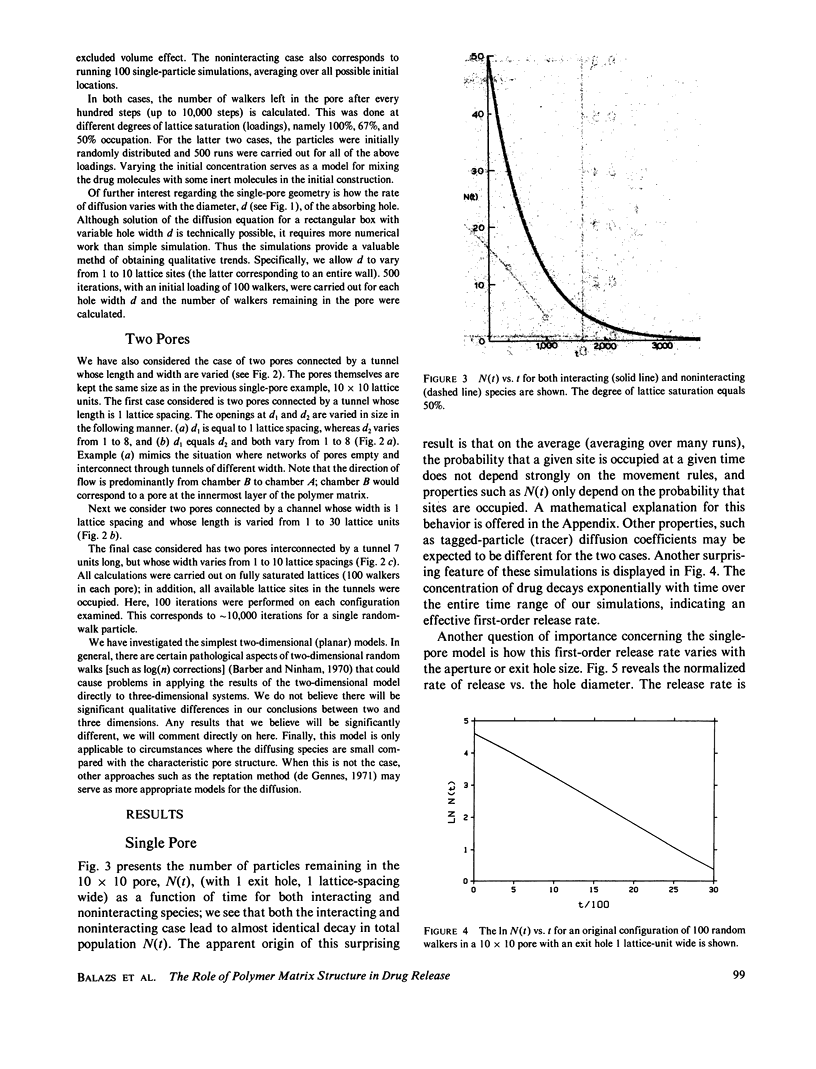
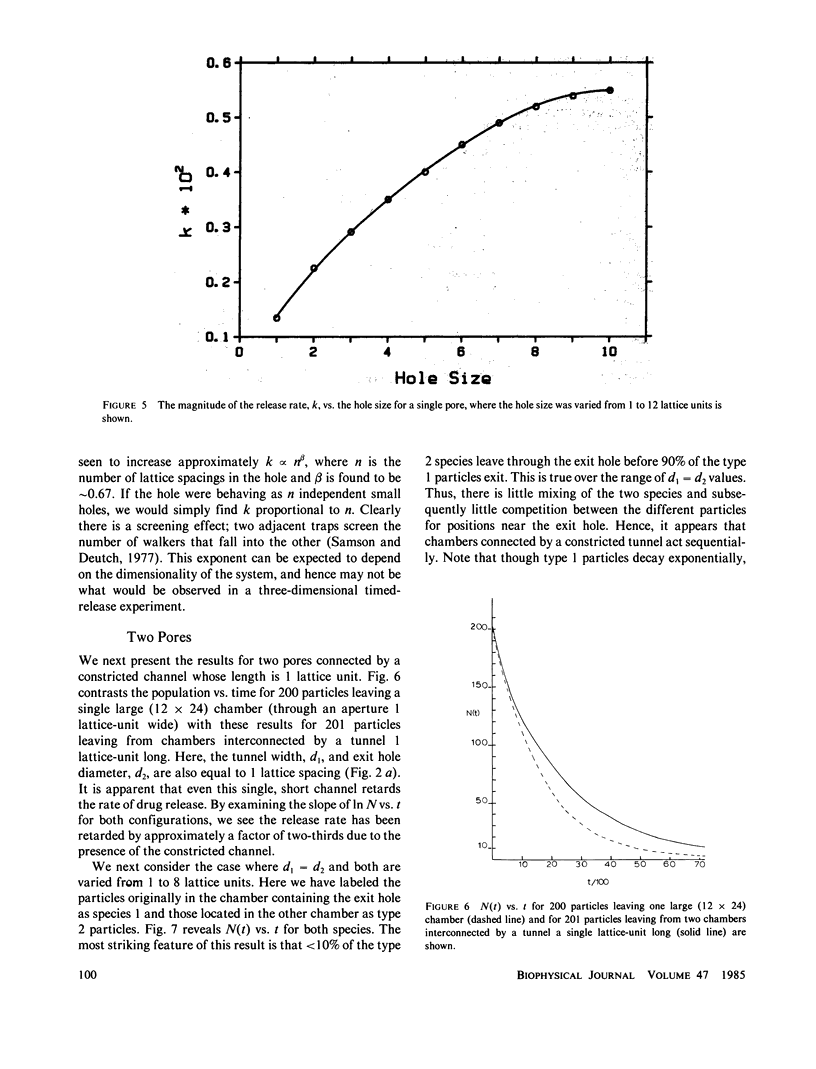
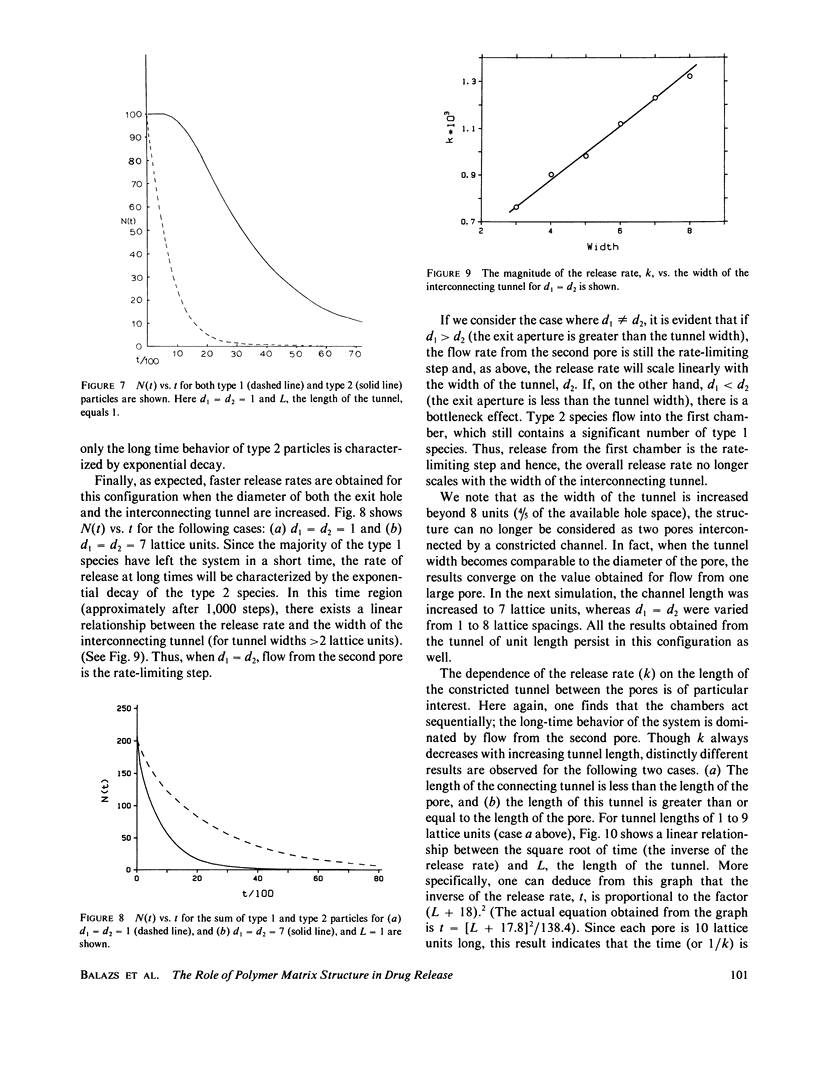
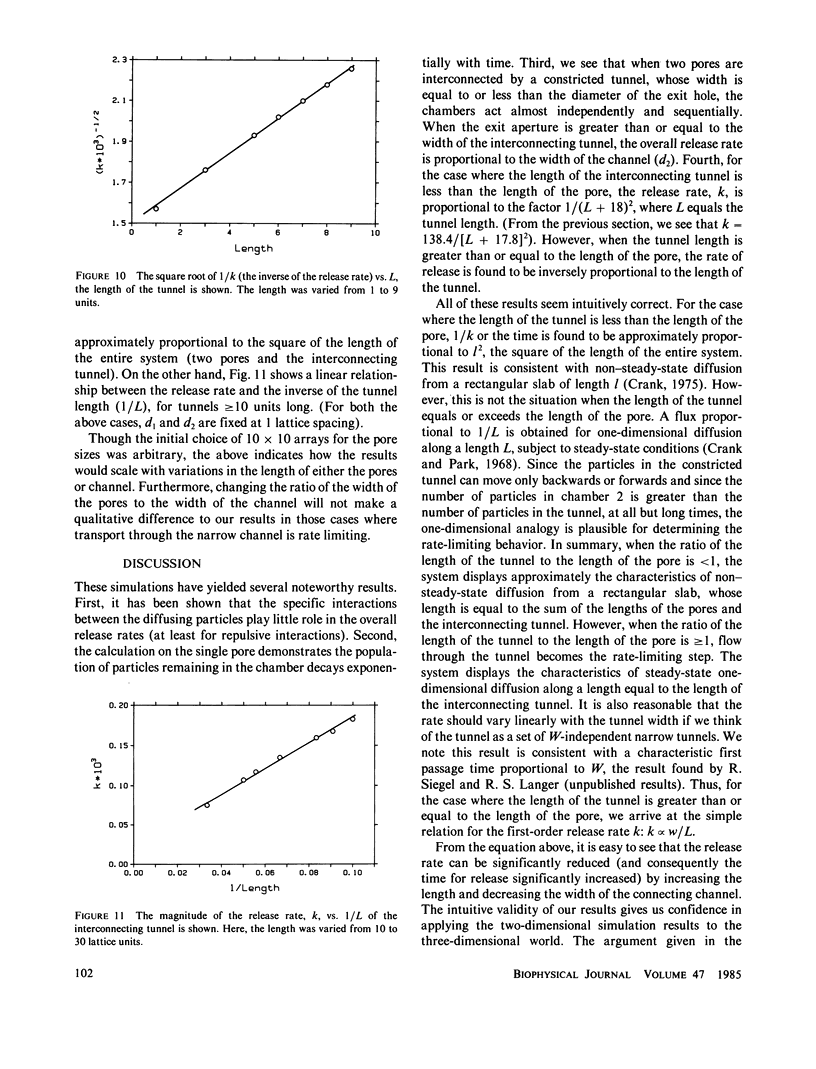
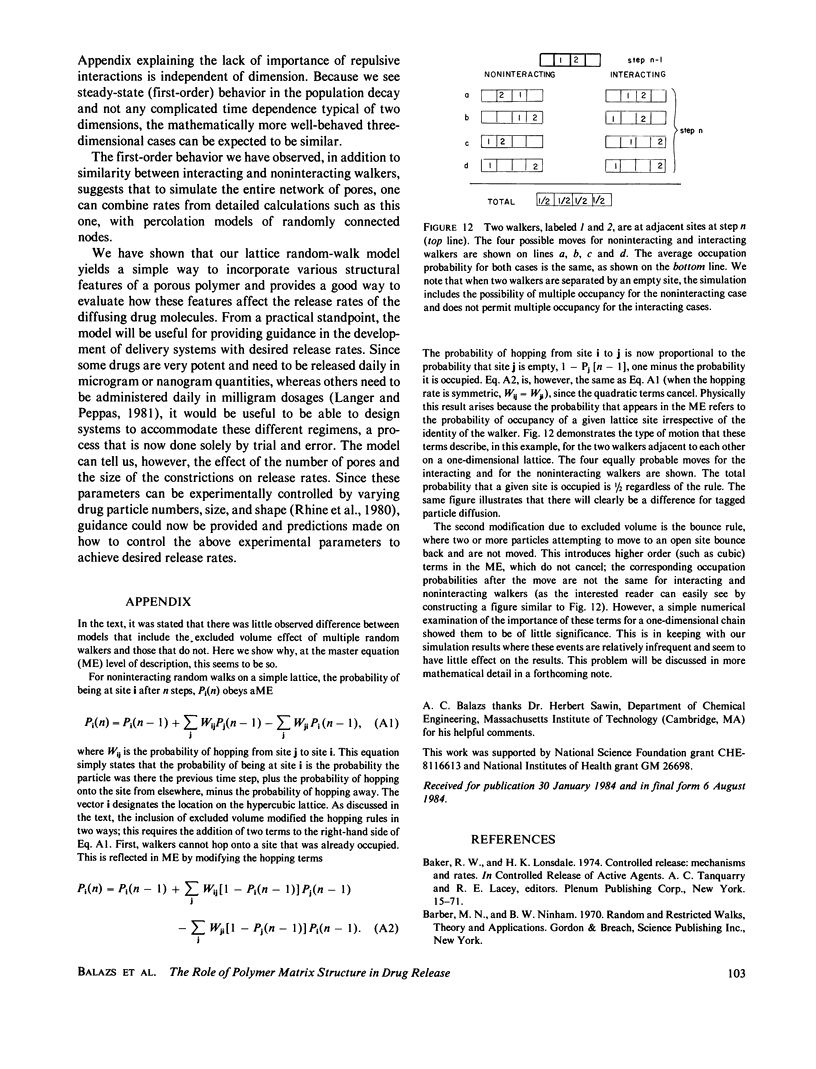
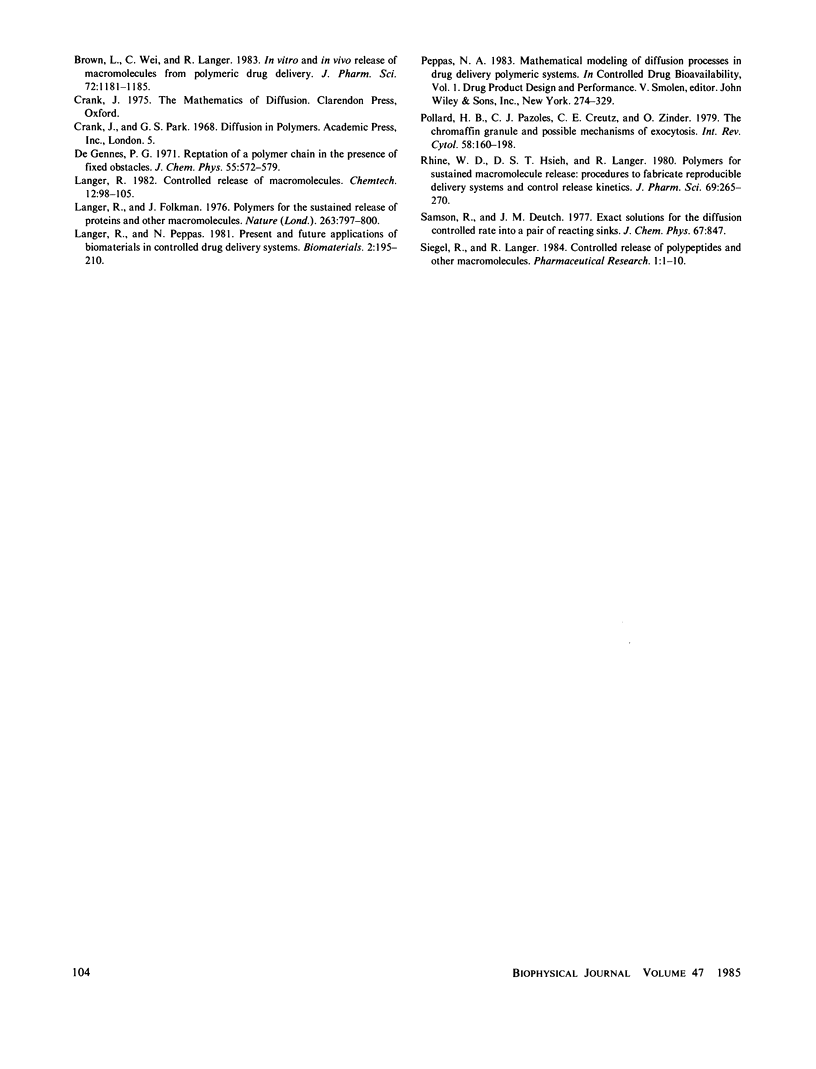
Selected References
These references are in PubMed. This may not be the complete list of references from this article.
- Brown L. R., Wei C. L., Langer R. In vivo and in vitro release of macromolecules from polymeric drug delivery systems. J Pharm Sci. 1983 Oct;72(10):1181–1185. doi: 10.1002/jps.2600721019. [DOI] [PubMed] [Google Scholar]
- Langer R., Folkman J. Polymers for the sustained release of proteins and other macromolecules. Nature. 1976 Oct 28;263(5580):797–800. doi: 10.1038/263797a0. [DOI] [PubMed] [Google Scholar]
- Rhine W. D., Hsieh D. S., Langer R. Polymers for sustained macromolecule release: procedures to fabricate reproducible delivery systems and control release kinetics. J Pharm Sci. 1980 May;69(3):265–270. doi: 10.1002/jps.2600690305. [DOI] [PubMed] [Google Scholar]


